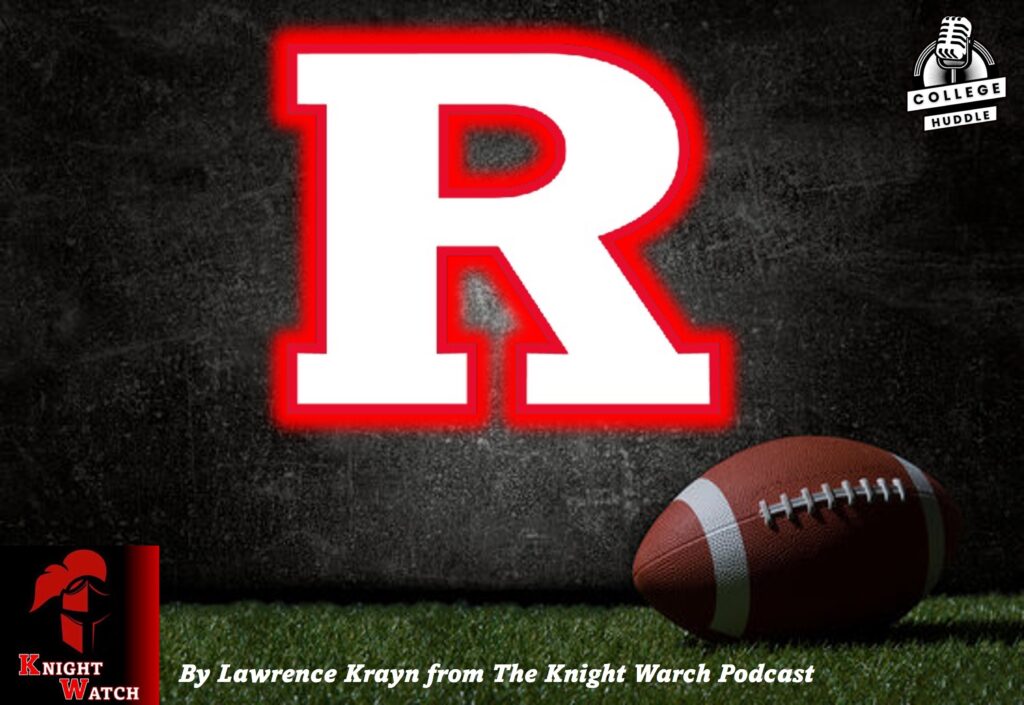
2024 Rutgers Football Preview
By Lawrence Krayn from the Knight Watch
It’s been about eight months since the Big Ten announced that it would add Pac-12 teams Oregon and Washington. These were in addition to California newcomers UCLA and USC, who were already on board and set to commence athletic competition in the league in 2024. All four teams are set to officially come under the Big Ten umbrella this August, and the conference’s 2024 football schedule has fully incorporated the west coast quartet.
The Rutgers Scarlet Knights, newcomers to the league themselves a decade ago, have had a mixed run in the conference so far depending on what year, which sport, and whose perspective one discusses. In football, the Knights dealt a bit of a surprise to the nation and the conference in their inaugural season, going 8-4 overall with a 3-5 record in the Big Ten. Rutgers trounced The University of North Carolina in that year’s Quick Lane Bowl en route to their first and only Lambert-Meadowlands trophy, once awarded to the best college football team in the northeast. Since then, however, it’s been a rough go for the Scarlet Knights. A great deal of those struggles have had to do with Rutgers being buried in the notorious Big Ten Eastern division, a competitive behemoth including the likes of Ohio State, Michigan, and Penn State. No matter what Rutgers has done, or how formidable they may have appeared, that gauntlet of teams has proven to be insurmountable for them almost every season.
Last season Rutgers took their first step toward changing all of that. The Knights finished 7-6 overall, including a 3-5 Big Ten record en route to defeating The University of Miami in the Pinstripe bowl. They almost gave Ohio State a run for their money in a home game that saw them taking a lead into halftime. Rutgers also looked like it belonged in virtually every contest, and saw the realized potential in maturing key players like running back Kyle Manongai, who rushed for over 1,000 yards and is set to reprise his starting role this season. Despite these strides however, what could the future possibly hold having to once again take on the teams mentioned above? Enter, Conference realignment.
With the addition of the four new schools, the Big Ten has abolished divisions, and teams are no longer tethered to a consistent set of opponents every year. In 2024, Rutgers will not have to play any of the big three teams in Michigan, Ohio State, or Penn State. It’s a welcomed reprieve for the Knights, who will be looking to build on last year’s progress. This year with a deeper roster, featuring a quarterback room boasting two experienced Big Ten starters including a returning Gavin Wimsatt and Minnesota transfer Athan Kaliakmanis.
The Knights’ schedule features away games against Maryland, Michigan State, USC, and Nebraska; and home games versus Illinois, UCLA, Minnesota, Wisconsin, and Washington. Having more home than away games is also a boon to the Knights, but the proverbial devil is in the details: UCLA and USC are both coming off 8-5 seasons and bowl victories, and Washington was one of the best teams in the nation, finishing as Pac-12 champions, going 14-1 overall, and losing in the National Championship game to Michigan.
Inter-conference level of competition is a hotly debated topic, and it remains to be seen how Rutgers’ 8-5 2023 record will compare to UCLA and USC’s 8-5 2023 record. Swapping National Champion Michigan for runner-up Washington is also no picnic. How these teams, who are unfamiliar with each other, and who will have to travel west to east or east to west, compete on the field will be interesting to see. While Rutgers fans should welcome the absence of their familiar bullies this season, there are still challenges a plenty for the Scarlet Knights. That being said, challenges present opportunity, and that’s just how Head Coach Greg Schiano and the loyal denizens of New Jersey like it.





